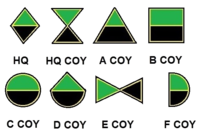The South African 2nd Infantry Division was an infantry division of the army of the Union of South Africa during World War II. The division was formed on 23 October 1940 and served in the Western Desert Campaign and was captured by German and Italian forces at Tobruk on 21 June 1942. The remaining brigade was re-allocated to the South African 1st Infantry Division.

The South African 3rd Infantry Division was an infantry division of the South African Army during World War II.
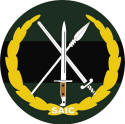
The South African Army Infantry Formation supervises all infantry within the South African Army.

The South African Irish Regiment is an infantry regiment of the South African Army. As a reserve unit, it has a status roughly equivalent to that of a British Army Reserve or United States Army National Guard unit.

The Cape Town Rifles is an infantry regiment of the South African Army. As a reserve unit, it has a status roughly equivalent to that of a British Army Reserve or United States Army National Guard unit.

Regiment Westelike Provincie is a mechanised infantry regiment of the South African Army. As a reserve unit, it has a status roughly equivalent to that of a British Army Reserve or United States Army National Guard unit.
South Africa has a number of Traditional Regiments. These are mostly South African Army Reserve Force regiments who have long histories of serving the Government of the day. Generally, the traditional regiments are those who were formed before the establishment of South Africa as a unified country, although there are a few which are much more recent. The traditional regiments have a number of elements which are different from the other units, such as certain peculiarities of dress. The most noticeable of these is the wearing of the Sam Browne belt and Sword by officers.

The 11th Infantry Brigade and Headquarters South East is a regular British Army brigade formation that is part of the Army’s 'Adaptable Force' meaning it has operational units under command, as well as regional responsibilities across the South East of England. The Brigade was re-established on 1 August 2014 when 145 (South) Brigade was re-designated as Headquarters 11th Infantry Brigade. In December 2014 the brigade merged with 2 Brigade to form Headquarters 11th Infantry Brigade and Headquarters South East.
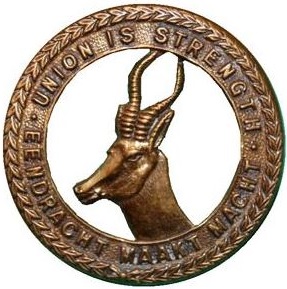
The South African Overseas Expeditionary Force (SAOEF) was a volunteer military organisation in World War I.
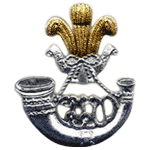
The Sri Lanka Light Infantry (SLLI) is the oldest regiment in the Sri Lanka Army and the oldest infantry regiment in the army. It is made up of ten regular battalions and five volunteer battalions, and is headquartered at the Panagoda Cantonment, Panagoda. Over the years it has become the most distinguished and dependable regiment in the army.
The Gemunu Watch (GW) is a light infantry regiment of the Sri Lanka Army, formed with troops from the Ceylon Light Infantry and the Ceylon Sinha Regiment in 1962. It has been deployed in many major operations against the LTTE. It is made up of 14 regular units and 9 volunteer units. Headquartered at Kuruwita Army Camp, Ratnapura. It is named after one of the most famous Lankan Kings, King Dutugemunu.
The South African 1st Infantry Brigade was an infantry brigade of the army of the Union of South Africa during World Wars I and II. During World War I, the Brigade served as a British formation in Egypt and on the Western Front, most famously the Battle of Delville Wood. It was reactivated at the start of the Second World War as a South African formation and served in East Africa and the Western Desert; the Brigade disbanded on 1 January 1943.
The 2nd South African Infantry Brigade was an infantry brigade of the army of the Union of South Africa during World War II. The Brigade formed part of the South African 1st Infantry Division and was formed on 13 August 1940. It served in East Africa and the Western Desert and was disbanded on 1 January 1943.

Western Province Command was a command of the South African Army.
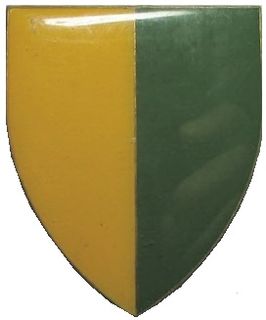
7 South African Infantry Division was a formation of the South African Army, active from the 1960s to 1999.
This page details the South African Army order of battle in 1940, before and after the formation of expeditionary forces.

8 South African Armoured Division was a formation of the South African Army, active from the 1970s to 1999.

71 Motorised Brigade was a formation of 7th South African Infantry Division, a combined arms force consisting of infantry, armour and artillery.
